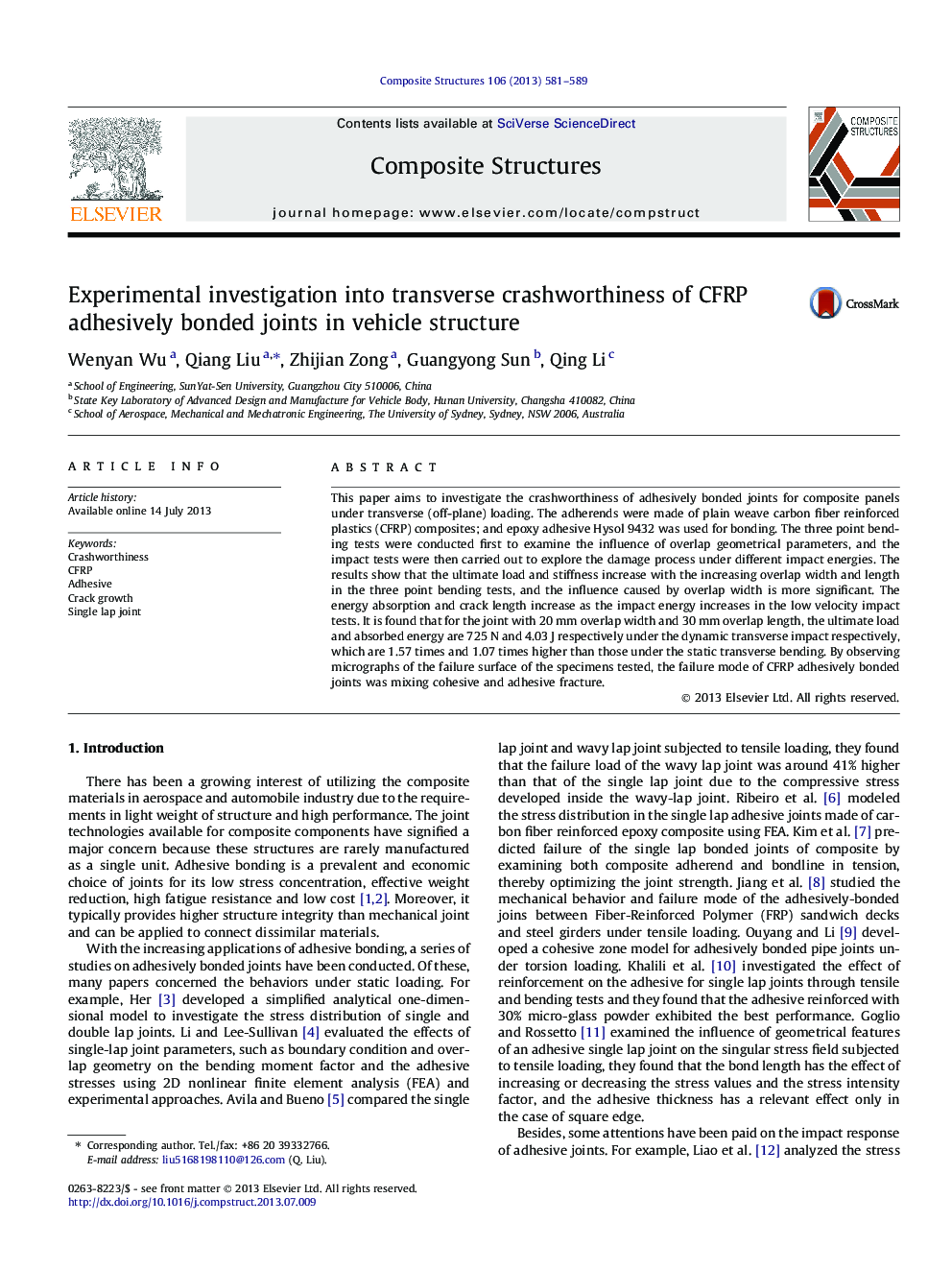| Article ID | Journal | Published Year | Pages | File Type |
|---|---|---|---|---|
| 6709081 | Composite Structures | 2013 | 9 Pages |
Abstract
This paper aims to investigate the crashworthiness of adhesively bonded joints for composite panels under transverse (off-plane) loading. The adherends were made of plain weave carbon fiber reinforced plastics (CFRP) composites; and epoxy adhesive Hysol 9432 was used for bonding. The three point bending tests were conducted first to examine the influence of overlap geometrical parameters, and the impact tests were then carried out to explore the damage process under different impact energies. The results show that the ultimate load and stiffness increase with the increasing overlap width and length in the three point bending tests, and the influence caused by overlap width is more significant. The energy absorption and crack length increase as the impact energy increases in the low velocity impact tests. It is found that for the joint with 20Â mm overlap width and 30Â mm overlap length, the ultimate load and absorbed energy are 725Â N and 4.03Â J respectively under the dynamic transverse impact respectively, which are 1.57 times and 1.07 times higher than those under the static transverse bending. By observing micrographs of the failure surface of the specimens tested, the failure mode of CFRP adhesively bonded joints was mixing cohesive and adhesive fracture.
Related Topics
Physical Sciences and Engineering
Engineering
Civil and Structural Engineering
Authors
Wenyan Wu, Qiang Liu, Zhijian Zong, Guangyong Sun, Qing Li,
